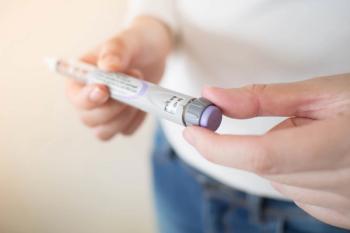
- Drug Topics November 2018
- Volume 163
- Issue 11
Get Started with Compliance Packaging: Advice for Pharmacists from Pharmacists
Compliance packaging, also called convenience packaging, is a good idea for both patients on many medications and for pharmacies. Here’s how to do it.
Whether you call it convenience packaging, compliance packaging, or adherence packaging, community pharmacies should consider offering this service to their patients, and marketing it to other healthcare providers, patients’ caregivers, and to health facilities. A panel discussion on convenience packaging, held October 7 at the NCPA 2018 Annual Convention in Boston, looked at three aspects of the subject: the common types of packaging, marketing the service, and best practices.
Convenience packaging prepacks a patient’s medications into blister packs or packets, portioned out and marked with the time of day they should be taken. It can be a profitable opportunity because it allows the pharmacy to make a complex regimen of medications easier for patients and caregivers, presenter Steve MacNeill, RPh, tells Drug Topics in an interview before the meeting. MacNeill is owner of Winchester Pharmacy in Winchester, MA.
Packaging systems for medications include hot seal, cold seal, robotic technology, daily dose packs, and multidose bubbles, said presenter Carlie Traylor, PharmD, associate director of strategic initiatives. Systems are available that seal the pills and capsules into card-backed blister packs, either as daily dose packs or monthly packs, with some allowing for multiple pills in each blister. Other systems place medications into small packets that are labeled and sealed, with some creating a continuous strip of packets.
Staff training and equipment required varies with the type of system, ranging from smaller systems taking up part of a counter to some larger robotic systems taking up floor and office space. Robotic systems might be best suited for pharmacies that have already been doing compliance packaging on a smaller scale, she said.
MacNeill agreed, noting that there are many systems out there and no one system is right for every pharmacy. He also stressed that a community pharmacy has to start slowly with convenience or adherence packaging, noting that pharmacists should consider:
- The potential impact on their daily work flow,
- The cost,
- The appearance of the software interface,
- How the staff will be trained, and
- State and federal guidelines.
Benjamin McNabb, PharmD, owner of Love Oak Pharmacy in Eastland, TX, noted that his patients who get prepacked medications take an average of 11 prescriptions a month and are often willing to pay the nonpreferred pharmacy copays at his pharmacy because of the extra value they are getting. As patients with complex conditions, they often need other products and services from the pharmacy, he adds.
MacNeill said the target market for compliance or adherence packaging is patients who take multiple medications per day, who have had repeat hospital or emergency department visits, who seem to have frequent early or late refills, and use home healthcare or have family taking care of their health needs.
Jeff Kirchner, RPh, CEO, Streu’s Pharmacy Bay Natural, Green Bay, WI, noted that he provides convenience packaging for children because local schools have rules against kids having a whole bottle of medications with them.
The packaging service does not sell itself, McNabb noted. It has to be marketed to patients and the community at large with a compelling message. A
Kirchner recommends creating a brochure about compliance packaging, along with samples of the packets or blister cards. His pharmacy offers single-dose, multidose, weekly, and monthly compliance packs.
There is a time element that has to be built into this kind of packaging, Kirchner added. You have to synch all medications, bill seven to 10 days before the start date of the next pack, check for any needed refills 20 to 30 days before the next pack, and fill meds five to seven days ahead, he said. Then home delivery should be done three to five days before the patient needs to start that pack.
Articles in this issue
about 7 years ago
Opinion: Pharmacists Are More Than Just Drug Expertsabout 7 years ago
Simple Communication Techniques Can Increase Patient Comprehensionabout 7 years ago
7 Tips for Becoming a Better Managerabout 7 years ago
Methods for Elderly Medication Managementabout 7 years ago
Prescription Counseling Equally Applicable to THC Productsabout 7 years ago
Small Doses: November Newsabout 7 years ago
Boost Pharmacy RevenueNewsletter
Pharmacy practice is always changing. Stay ahead of the curve with the Drug Topics newsletter and get the latest drug information, industry trends, and patient care tips.
























































































































